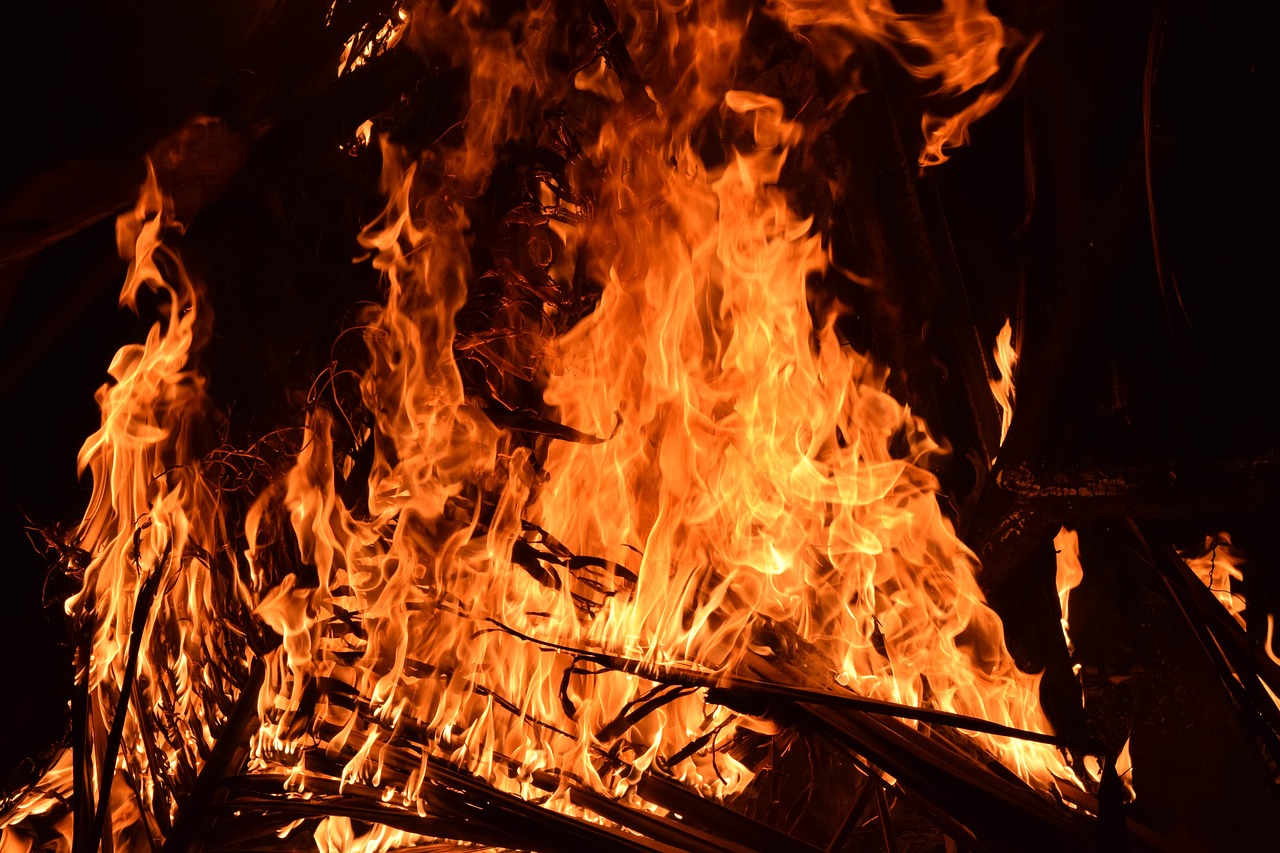This article provides an in-depth look at Typhlosion, a powerful Fire-type Pokémon known for its impressive stats and versatile moveset. We will explore its evolution process, optimal battle strategies, and how trainers can effectively utilize Typhlosion to maximize its potential in various combat scenarios.
Understanding Typhlosion’s Base Stats
Typhlosion has a well-rounded base stat distribution that makes it a formidable opponent in battles. With a high Special Attack stat, it excels at dealing damage from a distance. However, its defensive stats are relatively lower, which means trainers should be cautious when facing strong physical attackers. Here’s a breakdown of its base stats:
| Stat | Value |
|---|---|
| HP | 78 |
| Attack | 84 |
| Defense | 78 |
| Special Attack | 109 |
| Special Defense | 85 |
| Speed | 100 |
Optimal Moveset for Typhlosion
To make the most of Typhlosion’s abilities, selecting the right moveset is crucial. A balanced mix of Fire-type moves, alongside coverage options, can give trainers a competitive edge. Recommended moves include:
- Flamethrower – A reliable Fire-type attack with a chance to burn the opponent.
- Thunder Punch – Provides coverage against Water and Flying types.
- Focus Blast – A powerful move against Rock, Steel, and Normal types.
- Solar Beam – Useful for countering Water and Rock types, especially in sunny weather.
Evolution Process of Typhlosion
Typhlosion evolves from Quilava, which in turn evolves from Cyndaquil. To evolve Cyndaquil into Quilava, trainers need to level it up to level 14. Quilava then evolves into Typhlosion at level 36. The evolution not only increases Typhlosion’s stats but also grants access to more powerful moves, enhancing its battle capabilities.
Strategic Team Composition with Typhlosion
When incorporating Typhlosion into your team, consider pairing it with Pokémon that can cover its weaknesses, such as Rock and Water types. Support Pokémon that can set up barriers or provide healing can also greatly enhance Typhlosion’s effectiveness in battles.
Conclusion: Maximizing Typhlosion’s Potential
In conclusion, understanding Typhlosion’s stats, moveset, and evolution process is essential for any trainer looking to harness its full potential. With the right strategies and team composition, Typhlosion can become a powerful asset in any Pokémon battle.

Understanding Typhlosion’s Base Stats
Typhlosion is a formidable Fire-type Pokémon that showcases a variety of strengths, making it a popular choice among trainers. Its base stats significantly enhance its performance in battles, allowing it to excel in various competitive scenarios. By analyzing these stats, trainers can make informed decisions to maximize Typhlosion’s potential.
Base Stat Overview
| Stat | Value |
|---|---|
| HP | 78 |
| Attack | 84 |
| Defense | 78 |
| Special Attack | 109 |
| Special Defense | 85 |
| Speed | 100 |
With a total base stat of 509, Typhlosion stands out due to its high Special Attack and Speed. This combination allows it to strike first and hit hard, making it a formidable special sweeper in battles. However, while its offensive capabilities are impressive, trainers should also consider its defensive stats. With average HP and Defense stats, Typhlosion can be vulnerable to strong physical attackers.
Strengths and Weaknesses
- Strengths: High Special Attack and Speed allow for quick and powerful strikes.
- Weaknesses: Vulnerable to Water, Rock, and Ground-type moves, requiring strategic play to mitigate damage.
Understanding these strengths and weaknesses is crucial for trainers aiming to utilize Typhlosion effectively in battles. By leveraging its speed and special attack, trainers can create strategies that capitalize on Typhlosion’s capabilities while managing its vulnerabilities.

Optimal Moveset for Typhlosion
Creating the optimal moveset for Typhlosion is essential for maximizing its effectiveness in battles. As a powerful Fire-type Pokémon, Typhlosion has access to a variety of moves that can be strategically combined to enhance its combat performance. Below, we will delve into recommended moves, their types, and how they synergize to provide a competitive edge.
- Fire-Type Moves: Fire-type moves are Typhlosion’s primary strength. Moves such as Flamethrower and Fire Blast are highly recommended due to their excellent damage output and reliability. Flamethrower offers consistent damage with a chance to burn, while Fire Blast provides a higher damage potential at the cost of accuracy.
- Special Moves: Adding moves like Thunder Punch and Solar Beam to Typhlosion’s repertoire can significantly enhance its versatility. Thunder Punch allows it to counter Water-type Pokémon, while Solar Beam can surprise opponents who may expect a purely Fire-type strategy.
- Type Coverage: Incorporating moves from other types is crucial for covering Typhlosion’s weaknesses. For instance, Focus Blast can help deal with Rock and Ground types, which are typically strong against Fire Pokémon. This diversity in moves ensures Typhlosion can handle a variety of threats effectively.
Moreover, combining these moves with items like Choice Specs or Life Orb can further enhance Typhlosion’s damage output. Trainers should also consider the synergy between moves, such as pairing Will-O-Wisp to inflict burn status, reducing the opponent’s physical attack power.
In summary, crafting a well-rounded moveset for Typhlosion involves selecting powerful Fire-type moves, incorporating diverse special moves for coverage, and utilizing items that amplify its strengths. By doing so, trainers can significantly increase Typhlosion’s battle effectiveness and secure victories in competitive play.
Top Fire-Type Moves for Typhlosion
Typhlosion, the powerful Fire-type Pokémon, is renowned for its exceptional Fire-type moves that can turn the tide in battles. In this section, we delve into the most formidable Fire-type moves available to Typhlosion, exploring their damage potential and strategic applications.
- Flamethrower: This classic move boasts a solid base power of 90 and offers a reliable chance to inflict a burn on the opponent. Its accuracy of 100% makes it a dependable choice for consistent damage output.
- Eruption: One of Typhlosion’s signature moves, Eruption’s power is contingent on Typhlosion’s current HP, reaching a staggering maximum of 150 when at full health. This makes it a devastating option early in battles.
- Fire Blast: With a base power of 110, Fire Blast delivers significant damage but comes with a lower accuracy of 85%. Its potential to burn opponents adds an extra layer of strategy, making it a high-risk, high-reward choice.
- Inferno: Although it has an accuracy of only 50%, Inferno guarantees a burn if it hits, dealing 100 base damage. This move can be a game-changer when used strategically against opponents vulnerable to burns.
- Overheat: Overheat is a powerful move with a base power of 130, but it lowers Typhlosion’s Special Attack after use. This makes it ideal for finishing off weakened foes but requires careful timing to avoid diminishing Typhlosion’s effectiveness in prolonged battles.
Incorporating these moves into Typhlosion’s moveset allows trainers to maximize damage output while considering the strategic implications of each move. Understanding when to use each attack can significantly enhance Typhlosion’s performance in battles, making it a formidable force on any team.
Ultimately, the key to mastering Typhlosion lies in not only knowing its powerful Fire-type moves but also understanding how to leverage them effectively against various opponents. By doing so, trainers can ensure that Typhlosion remains a pivotal player in their battle strategies.
Special Moves to Consider
In addition to its powerful Fire-type moves, Typhlosion has access to a variety of special moves that can significantly enhance its versatility in battles. These moves not only broaden Typhlosion’s attacking options but also allow it to adapt to different battle scenarios effectively.
- Solar Beam: This Grass-type move can catch opponents off guard, particularly those that are weak to Grass attacks. Although it requires a turn to charge, its high damage output can be devastating.
- Thunder Punch: A valuable Electric-type move that provides coverage against Water and Flying-type Pokémon. Its quick execution makes it a reliable choice in fast-paced battles.
- Shadow Ball: This Ghost-type move is particularly useful against Psychic and Ghost-type opponents, allowing Typhlosion to exploit type weaknesses effectively.
- Focus Blast: A Fighting-type move that can deal significant damage to Rock, Steel, and Ice-types. It is powerful but comes with a lower accuracy, so timing its use is crucial.
By incorporating these diverse moves into Typhlosion’s moveset, trainers can create a more balanced and unpredictable strategy. This adaptability is essential in competitive play, where opponents may anticipate standard Fire-type attacks. For instance, using Solar Beam against a Water-type Pokémon can turn the tide of battle, catching the opponent off guard.
Furthermore, understanding the synergy between these special moves and Typhlosion’s Fire-type attacks can lead to effective combo plays. For example, following up a powerful Fire Blast with a Thunder Punch can maximize damage output while keeping opponents on their toes.
In conclusion, the inclusion of special moves in Typhlosion’s arsenal not only enhances its battle capabilities but also offers trainers the opportunity to develop more sophisticated strategies. This versatility is key to achieving success in various battle scenarios.
Type Coverage with Diverse Moves
Understanding type matchups is crucial for achieving success in Pokémon battles. For trainers utilizing Typhlosion, a Fire-type Pokémon, it is vital to recognize its strengths and weaknesses against various types. By incorporating a diverse array of moves into Typhlosion’s arsenal, trainers can effectively counter opposing types and cover their own vulnerabilities.
Typhlosion’s primary strength lies in its powerful Fire-type moves. However, relying solely on Fire-type attacks can leave it exposed to Water, Rock, and Ground-type Pokémon. To mitigate these weaknesses, trainers should consider adding moves from other types to create a more balanced moveset. Here are some recommended moves to enhance Typhlosion’s versatility:
- Thunder Punch: This Electric-type move is a great counter against Water-types, allowing Typhlosion to deal significant damage to Pokémon that would otherwise threaten it.
- Focus Blast: A Fighting-type move that can help Typhlosion handle Rock-types effectively, offering a strategic advantage in battles.
- Solar Beam: As a Grass-type move, Solar Beam can surprise Ground-types and Water-types alike, providing Typhlosion with an edge in certain matchups.
In addition to these moves, trainers should also focus on the timing of their attacks. Using moves with status effects or those that can lower an opponent’s stats can create openings for Typhlosion to unleash its powerful Fire-type moves without fear of retaliation.
Furthermore, understanding the synergy between Typhlosion’s moves is essential. For example, following up a Thunder Punch with a Fire-type move can catch opponents off guard, especially those expecting a standard Fire-type attack. Such tactics not only enhance Typhlosion’s offensive capabilities but also allow it to maintain a defensive posture against various threats.
In conclusion, incorporating diverse moves into Typhlosion’s moveset is essential for maximizing its effectiveness in battles. By understanding type matchups and strategically selecting moves, trainers can ensure that Typhlosion remains a formidable opponent on the battlefield.
Recommended Tactics for Using Typhlosion
When it comes to maximizing the potential of Typhlosion in battles, a well-thought-out strategy is essential. This Fire-type Pokémon is known for its high Special Attack and Speed stats, making it a formidable opponent. However, to truly harness Typhlosion’s strengths while mitigating its vulnerabilities, trainers must adopt specific tactics. Here are some recommended strategies for using Typhlosion effectively in combat:
- Utilize Speed Advantage: Typhlosion’s impressive Speed allows it to outspeed many opponents. Use this to your advantage by employing moves like Flamethrower or Fire Blast to deal significant damage before the opponent can respond.
- Leverage Type Matchups: Typhlosion is particularly effective against Grass, Bug, Ice, and Steel types. Ensure you bring Typhlosion into battles where it can exploit these weaknesses, maximizing its damage output.
- Incorporate Coverage Moves: To cover its weaknesses, consider teaching Typhlosion moves like Focus Blast or Earthquake. These moves can help counter Rock and Water types, which pose a threat to Typhlosion.
- Use Status Moves Wisely: Moves like Will-O-Wisp can cripple physical attackers by inflicting burn status, thus reducing their damage output. This tactic not only protects Typhlosion but also gives it an edge in prolonged battles.
- Team Synergy: Pair Typhlosion with Pokémon that can cover its weaknesses. For example, Water or Ground types can handle Rock-type threats, allowing Typhlosion to shine without the risk of being knocked out.
- Item Optimization: Consider equipping Typhlosion with items like Choice Specs to boost its Special Attack or Life Orb for increased damage output at the cost of some HP. These items can significantly enhance Typhlosion’s effectiveness in battles.
By implementing these tactics, trainers can effectively utilize Typhlosion in various battle scenarios, ensuring that this powerful Pokémon remains a key player in their team composition.

Evolution Process of Typhlosion
Understanding the evolution of Typhlosion is essential for trainers aiming to maximize their gameplay experience. Typhlosion evolves from Quilava, which itself is the evolved form of Cyndaquil. This evolutionary line is significant not only for its aesthetic appeal but also for the enhanced capabilities that come with each stage of evolution.
To evolve Quilava into Typhlosion, trainers must reach level 36. This evolution process is straightforward, yet it requires consistent training and experience points. Here are the steps to facilitate this evolution:
- Level Up Quilava: Ensure that Quilava gains enough experience points through battles or by using Experience Candies.
- Utilize Effective Moves: Engage in battles using Quilava’s best moves to gain experience more efficiently.
- Participate in Raids: Joining raids can provide a substantial amount of experience, speeding up the leveling process.
The benefits of evolving Typhlosion are numerous. Upon evolution, Typhlosion receives a significant boost in its base stats, particularly in Attack and Special Attack, making it a formidable opponent in battles. Additionally, it gains access to more powerful moves, enhancing its versatility and effectiveness in various combat scenarios.
Furthermore, Typhlosion’s evolution unlocks new strategic possibilities for trainers. With its enhanced abilities, trainers can explore different battle tactics, such as:
1. Utilizing Fire-type moves for high damage output.2. Leveraging its speed to outpace opponents.3. Incorporating type coverage to counter weaknesses.
In conclusion, understanding the evolution process of Typhlosion and the associated benefits is crucial for trainers. By focusing on leveling up Quilava and strategically utilizing its abilities, trainers can ensure a smooth evolution into Typhlosion, unlocking its full potential in battles.
How to Evolve Cyndaquil into Typhlosion
For aspiring Pokémon trainers, evolving Cyndaquil into Typhlosion is a significant milestone that enhances both the trainer’s experience and the Pokémon’s capabilities. This Fire-type Pokémon is not only beloved for its design but also for its powerful moves and stats.
The evolution process begins with Cyndaquil, which evolves into Quilava at level 14. To expedite this process, trainers should focus on the following:
- Battle Frequently: Engaging in battles will provide Cyndaquil with the necessary experience points (XP) to level up quickly. Aim to battle wild Pokémon or trainers that are within a few levels of Cyndaquil.
- Utilize XP-Boosting Items: Items like the Exp. Share can help Cyndaquil gain XP even when it is not in battle. This is particularly useful for trainers who want to level up multiple Pokémon simultaneously.
- Participate in Raids and Events: Joining raids or special Pokémon events can yield substantial XP rewards, accelerating the leveling process.
Once Cyndaquil reaches level 14, it will evolve into Quilava. The next stage is evolving Quilava into Typhlosion, which occurs at level 36. To ensure a smooth transition, trainers should:
- Continue Battling: Keep Quilava engaged in battles to accumulate experience points. Use a mix of types to maximize XP gains.
- Feed with Rare Candies: Rare Candies can provide an instant level up, making them a valuable resource if you’re close to the required level.
In conclusion, evolving Cyndaquil into Typhlosion requires dedication and strategic planning. By focusing on battles, utilizing XP-boosting items, and participating in events, trainers can expedite the evolution process and enjoy the benefits of having a powerful Typhlosion on their team.
Benefits of Evolving Typhlosion
Evolving Typhlosion offers a myriad of benefits that can significantly enhance its effectiveness in battles. As trainers progress through the evolution process, they unlock a variety of advantages that not only improve Typhlosion’s stats but also broaden its tactical options.
- Stat Boosts: One of the most notable advantages of evolving Typhlosion is the substantial increase in base stats. Upon evolution from Quilava, Typhlosion gains enhanced Attack, Special Attack, and Speed stats, making it a formidable opponent. These boosts allow Typhlosion to deal more damage and outpace many adversaries, crucial factors in competitive battles.
- Access to Powerful Moves: Evolution also grants Typhlosion access to a wider range of moves, including some of the most powerful Fire-type attacks. Moves like Flamethrower and Eruption become available, providing trainers with options that can turn the tide of battle. The ability to learn moves with higher damage output enhances Typhlosion’s role as a primary damage dealer on any team.
- Increased Versatility: Evolving Typhlosion allows it to learn diverse moves beyond its primary Fire-type arsenal. This versatility enables trainers to cover various type weaknesses effectively. For instance, incorporating moves like Earthquake or Solar Beam can surprise opponents and provide strategic advantages in battle.
- Improved Survival: With the evolution, Typhlosion also benefits from better defensive capabilities. While it may still be vulnerable to Water and Rock-type moves, the increased HP and defenses can help it withstand hits longer, allowing for more opportunities to strike back.
In summary, evolving Typhlosion not only enhances its raw power through stat boosts and access to potent moves but also increases its tactical flexibility. Trainers who invest in evolving their Typhlosion can expect a more robust and capable Pokémon, ready to take on the challenges of any battle.

Strategic Team Composition with Typhlosion
Building a successful team in Pokémon battles is crucial, especially when incorporating Typhlosion, a formidable Fire-type Pokémon. To maximize Typhlosion’s potential, trainers should focus on creating a well-rounded team that not only enhances its strengths but also mitigates its weaknesses. This section delves into effective strategies for team composition, ensuring that Typhlosion can thrive in various battle scenarios.
Typhlosion excels as a special attacker, boasting high Special Attack and Speed stats. This makes it essential to position Typhlosion as a lead or a mid-game sweeper. Trainers should consider its role carefully, ensuring that it can capitalize on its offensive capabilities while being supported by Pokémon that can handle its vulnerabilities.
- Water-Type Pokémon: Pairing Typhlosion with strong Water-types like Gyarados can provide excellent coverage against Rock and Ground types, which threaten Typhlosion.
- Ground-Type Pokémon: Pokémon such as Excadrill can counter Electric-types that pose a threat to Typhlosion, while also benefiting from Typhlosion’s ability to handle Steel-types.
- Fairy-Type Pokémon: Including Fairy-types like Gardevoir can help cover Fighting and Dragon threats, ensuring a balanced approach to team dynamics.
Support Pokémon can significantly enhance Typhlosion’s effectiveness. Pokémon with moves that provide status effects or entry hazards can create openings for Typhlosion to unleash its powerful moves. Consider including Pokémon like Clefable, which can use Wish to heal Typhlosion, or Rotom-Wash, which can pivot in and out to maintain pressure.
Typhlosion is particularly vulnerable to Rock, Water, and Ground-type moves. It’s essential to include Pokémon that can absorb these hits or retaliate effectively. Pokémon like Zapdos can handle Water and Flying threats, while a sturdy Ferrothorn can take on Rock-types and provide valuable resistance.
In conclusion, crafting a strategic team composition around Typhlosion involves careful selection of Pokémon that complement its strengths and cover its weaknesses. By focusing on synergy, support, and countering vulnerabilities, trainers can ensure that Typhlosion becomes a pivotal member of their battle team.
Pairing Typhlosion with Support Pokémon
is essential for maximizing its effectiveness in battles. Typhlosion, a powerful Fire-type Pokémon, can greatly benefit from the right support Pokémon that not only enhance its offensive capabilities but also provide defensive coverage. In this section, we will delve into the ideal support Pokémon that can help Typhlosion shine on the battlefield.
Support Pokémon can fulfill various roles, including healing, status infliction, and providing type advantages. Below are some of the best options to consider:
| Support Pokémon | Role | Benefits for Typhlosion |
|---|---|---|
| Gardevoir | Special Attacker & Support | Can use Wish to heal Typhlosion and Psychic moves to counter Fighting types. |
| Ferrothorn | Defensive Wall | Provides resistance to Water and Rock moves, covering Typhlosion’s weaknesses. |
| Clefable | Bulky Support | Can use Heal Bell to cure status conditions and Moonblast for type coverage. |
| Rotom-Wash | Special Attacker & Pivot | Offers resistance to Water and Electric attacks, while providing Volt Switch for momentum. |
By pairing Typhlosion with these support Pokémon, trainers can create a balanced team that enhances its offensive potential while providing necessary protection. For instance, having Gardevoir on the team allows Typhlosion to recover HP while dealing with threats that might pose a challenge. Similarly, Ferrothorn can absorb hits from Water-types, ensuring that Typhlosion remains in play longer.
In conclusion, the right support Pokémon can significantly enhance Typhlosion’s performance in battles. By carefully selecting partners that cover its weaknesses and bolster its strengths, trainers can maximize Typhlosion’s potential and create a formidable team.
Countering Typhlosion’s Weaknesses
Typhlosion, the formidable Fire-type Pokémon, possesses unique strengths, but like all Pokémon, it has its vulnerabilities. Understanding these weaknesses is crucial for trainers aiming to maximize their battle effectiveness. This section outlines essential strategies to effectively counter Typhlosion’s weaknesses, ensuring trainers can navigate challenging matchups with confidence.
- Exploiting Type Weaknesses: Typhlosion is particularly vulnerable to Water, Rock, and Ground type moves. Utilizing Pokémon with strong moves in these categories can quickly diminish Typhlosion’s health.
- Choosing the Right Pokémon: Consider using Pokémon like Swampert or Gyarados, which can effectively resist Typhlosion’s Fire-type attacks while delivering powerful hits in return. This strategic pairing can turn the tide of battle.
- Utilizing Speed Advantage: Many Water and Rock-type Pokémon are faster than Typhlosion. Utilizing this speed advantage allows trainers to strike first, potentially knocking out Typhlosion before it can retaliate.
- Weather Effects: Implementing weather effects such as Rain can weaken Typhlosion’s Fire-type moves, making it less effective in battle. Pokémon that can create rain, like Politoed, can be advantageous when facing Typhlosion.
- Focus on Status Moves: Moves that inflict status conditions, such as Burn or Freeze, can hinder Typhlosion’s performance. Pokémon with access to these moves can help neutralize Typhlosion’s offensive capabilities.
By implementing these strategies, trainers can effectively counter Typhlosion’s weaknesses and enhance their chances of victory in battles. Understanding the dynamics of type matchups and leveraging the right Pokémon are essential steps toward achieving success.

Conclusion: Maximizing Typhlosion’s Potential
In summary, a comprehensive understanding of Typhlosion’s stats, moveset, evolution process, and effective battle strategies is crucial for trainers aiming to enhance their gameplay experience. Typhlosion, being a powerful Fire-type Pokémon, possesses unique capabilities that can be harnessed with the right knowledge and tactics.
First and foremost, trainers should familiarize themselves with Typhlosion’s base stats. With high Special Attack and Speed, Typhlosion excels in offensive roles, allowing it to strike quickly and effectively. However, its defensive stats are relatively lower, making it essential for trainers to adopt a strategy that minimizes exposure to its vulnerabilities.
Building an optimal moveset is another critical element. Typhlosion benefits greatly from a combination of powerful Fire-type moves, such as Flamethrower and Eruption, which can deal significant damage. Additionally, incorporating moves that cover its weaknesses, like Solar Beam for Water-types, can provide versatility in battles.
Moreover, understanding the evolution process from Cyndaquil to Typhlosion is vital. Trainers should focus on leveling up Quilava, as this evolution not only enhances Typhlosion’s stats but also unlocks access to more formidable moves. The benefits of evolving should not be underestimated; they can significantly impact battle outcomes.
Lastly, crafting a strategic team composition that complements Typhlosion’s strengths will maximize its potential in battles. Pairing Typhlosion with Pokémon that can cover its weaknesses, such as those that resist Water or Rock-type moves, will create a well-rounded team. This synergy allows Typhlosion to thrive while mitigating risks.
In conclusion, by mastering the intricacies of Typhlosion’s capabilities, trainers can transform this Fire-type Pokémon into a formidable asset. With the right strategies and team composition, Typhlosion can dominate in various battle scenarios, proving its worth as a valuable member of any Pokémon team.
